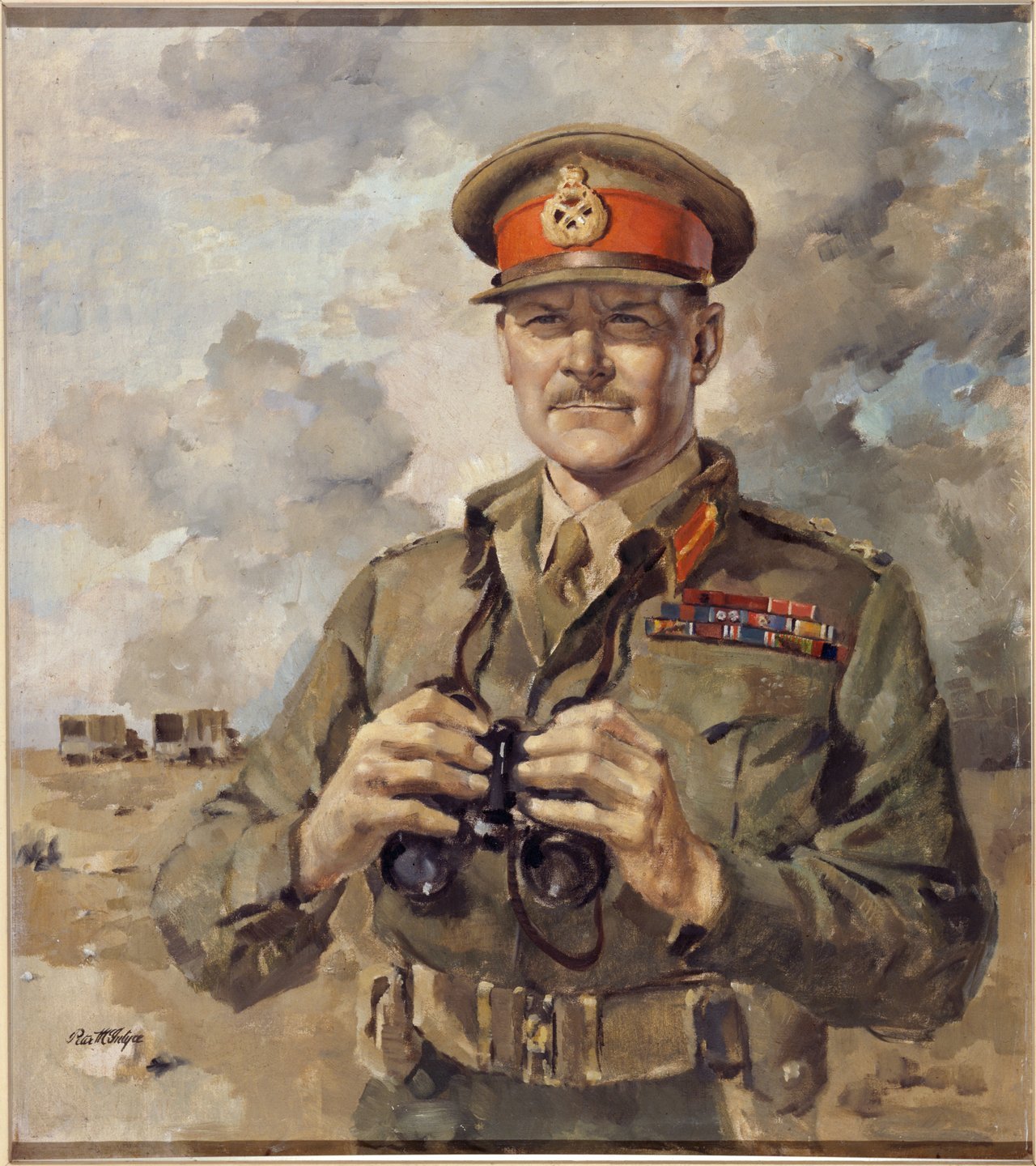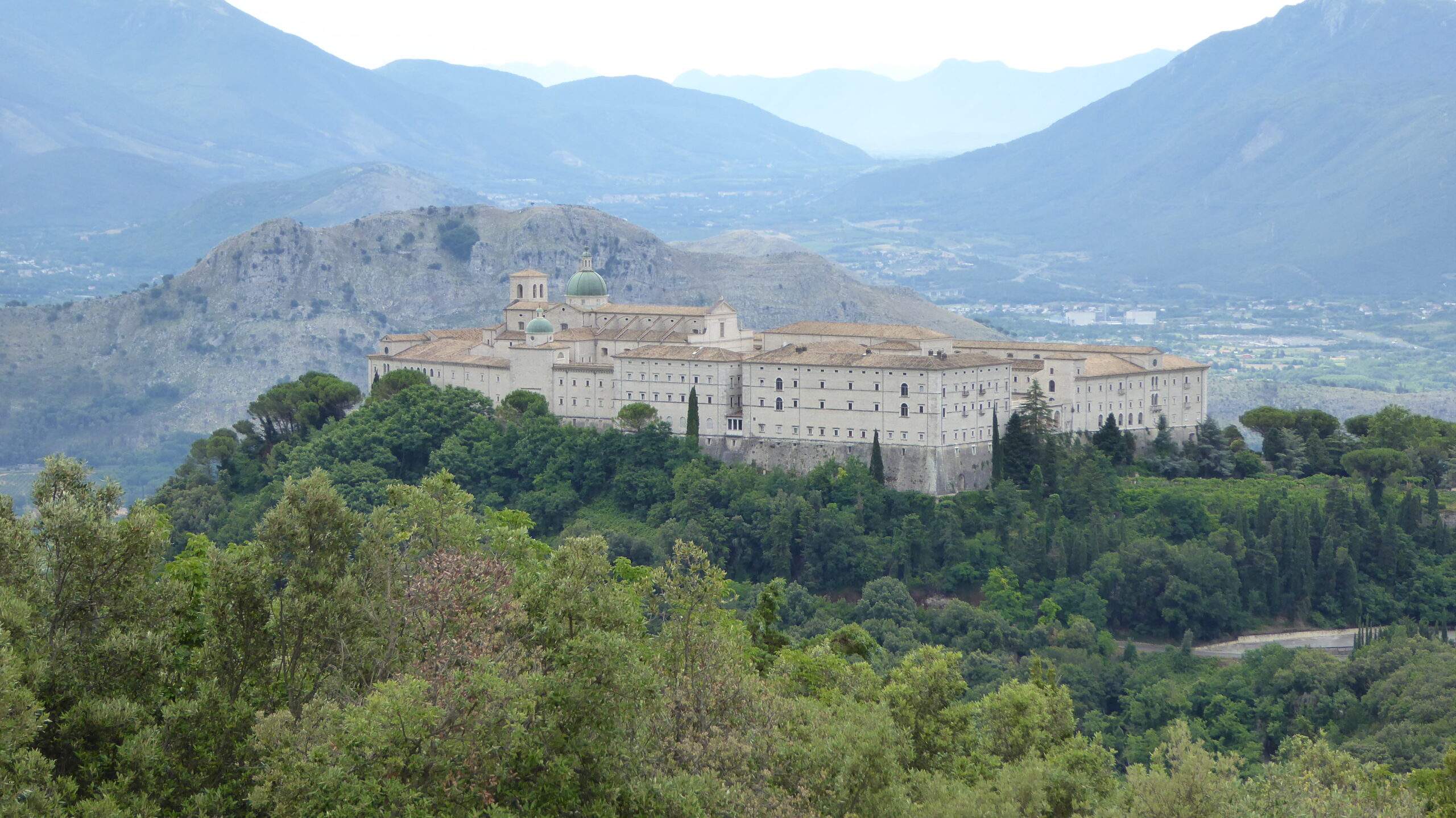Union
The Italo-German forces had suffered defeat after defeat. They had been pushed out of North Africa, and by August 1943, had lost their grip on Sicily as well. With Mussolini removed from power, an end to the Italian commitment to the Axis Powers and an invasion of the Italian mainland by the Allies seemed imminent.
German Generalfeldmarschall Albert Kesselring, supreme commander of the German forces in the Mediterranean theatre, planned a series of fortification lines south of Rome that would delay the Allies until his main defences, the Bernhardt and Gustav Lines in Central Italy, were ready. There, with the huge mass of Monte Cassino in its centre, they would make their stand along the steep ridges, mountain peaks and rivers.
The Italian theatre would not be the place to decide the war, but for the Allied generals, it would tie down as many German forces as possible, preventing them from going to other theatres where they were badly needed, so a series of grim battles against the German fortifications awaited the Allied forces on their march northwards.
Italy is a tough country to fight in – 80% of it is rugged terrain, with rocky hills and high mountain ranges, and the only corridors exist through the valleys of thick forests and deep marshes. Most travel routes run from east to west, not north to south, which limited the few options the Allies had with their approach. Leapfrogging towards their defences around Monte Cassino, the Germans used the terrain as a useful multiplier of their forces. Observation posts and mortar pits were blasted into the mountain sides; pillboxes and concrete bunkers were all over and the settlements around were prepared with anti-tank ditches, hidden machine-gun posts, belts of barbed wire, minefields and flooded fields. It was truly a fortress – one of the most formidable defence systems, not just in this war, but in military history as a whole, with an in depth network of mutually supporting nests of resistance all along the mountain peaks. And above it all towered the old Benedictine monastery and abbey, looking down on the ever advancing Allied forces.
The living legend

In early 1944, after a series of bloody battles failed to breakthrough, the task of attacking from the Adriatic Front was given to Lieutenant General Freyberg, commander of the New Zealand and 4th Indiana Divisions. Freyberg was a living legend. He had won the Victoria Cross during the Great War, had fought at Gallipoli, the Somme, and in this war was a veteran of Crete and El Alamein. Now, he was tasked by British Prime Minister Winston Churchill himself with keeping Kesselring from Anzio, where Allied landings would soon hopefully build a beachhead. It was American General Mark Clark, though, who wanted the breakthrough on that front before the landings at Normandy in France could happen. For that, a costly frontal attack seemed the only option.
It all reminded Freyberg of the Somme back in 1917. The terrible sight of bloated corpses from many nations, lying in the churned up ground for months as heavy rain turned the whole area into a thick morass. Small advances were paid with blood, running up against machine guns and barbed wire. On the high ground, sleet and snow caused epidemic frostbite and froze the oil in the engines. On the lower ground, where nothing thrived in the mud and rain but mosquitos, there was little shelter, except caves and trenches. Trucks could not advance, and it took 6 hours for mules to get the wounded down from the heights. Shell-shocked, deprived of sleep, in rain and snow, the men endured like zombies. Discipline and morale eroded to the point where officers had to patrol the rear to intercept men trying to slip away to nearby Italian villages. Venereal diseases too caused as many casualties as the German booby traps and mines. The Germans fared little better, though. Under constant barrages of artillery, they lay in wet holes in the ground and covered themselves with the same wet blankets, day after day.
In mid-January 1944, the first battle for Cassino was fought to a standstill, and men from many different nations faced the appalling and merciless conditions of the harsh Italian winter. Alongside British and American forces fought the French expeditionary force, made up of Moroccans, Algerians and Tunisians, the Japanese-Americans from the 100th Nisei, Polish troops, Indians – including Punjabis and Gurkhas – and thousands of Italian volunteers. They were not only facing the Germans, but volunteers and conscripts native to Poland, Czechoslovakia, the Baltics and the Soviet Union.
While the French fought a costly battle through the mountains in the east, the British attempted to cross the major streams of Garigliano and Rapido, trying to link up with the Anzio beachhead and outflank the whole German system from the left. With clear air and artillery superiority, they hoped to simply force their way through the Gustav Line and into the Liri valley. P40 Kittyhawks and A20 bombers provided a constant curtain of air support, but the German defences held. They were quicker at deploying operational reserves and plugging holes in the lines. The German Luftwaffe‘s 1st Fallschirmjäger Division, one of the most formidable units in the Italian theatre, manned independent resistance nests everywhere. Alongside them stood Gebirgsjäger and mobile Panzergrenadier Divisions, experienced in small battle group fighting and commanded by officers with years of Eastern Front experience. German observers hidden on the monastery hill saw everything that approached them.
Symbol of defiance or place of malevolence?

The ancient abbey of Cassino had defied attacks from the south for centuries, and now the Benedictine monastery, with its 100ft high walls of quarried limestone up to 30ft thick, was a symbol of defiance, staring down on the miserable attackers. With its underground crypts, old chapels and basilicas, priceless artwork and libraries, it was a sacred place for the Christendom worldwide, even housing the relics of Saint Benedict himself. But as thousands died at its feet, it became a malevolent place. In the eyes of many Allied soldiers, the monastery mocked and taunted them with its grandeur, always on the horizon, always out of reach.
At first, it was excluded from the list of bombing targets, though the Germans had carried away much of the art and relics before the battle began, storing most of it in monasteries and salt mines all over Italy and Germany. Some of it, of course, found itself a new home in Hermann Göring’s eccentric living room.
But by February, the voices to destroy it became louder. Capturing it intact seemed to be suicide. By mid-February its fate was decided, and on February 14, leaflets were dropped warning the inhabitants in the whole region of the imminent destruction of the abbey. The next day, waves of B17 Flying fortresses and B26 bombers came from the heavens and turned it into a burning ruin.
An outcry came from the whole catholic world, and to this day, it is still debated whether the monastery was of military value. The monks at the time insisted that the Germans had declared it a ‘safe zone’ and no military forces were inside. It is possible that during the Allied decoding of German messages, they confused the word ‘Abt’, German for Abbot, with ‘Abteilung’, the German word for detachment. But whatever it had been a day earlier, now the Germans were quick to incorporate the ruins into their defence system.
The fight for Cassino
Progress was snail-like for the attackers, the New Zealanders and Indians began the fight for Cassino town, and every house was carefully sandbagged and turned into a bunker. German snipers were relentless though, and paratroopers fought for every corner. Independent nests of resistance preyed on advancing Allies with automatic weapons and hand grenades. Even a few panzers and assault guns had survived, hidden in the cellars. Fights were fought over streets that basically no longer existed, by men who brought bazookas to a gunfight.
On the Ides of March, a second bombardment was to smash the German positions. 1,000 guns – among them three giant Italian railway guns – left nothing surrounding Cassino unscathed, smothering the German positions in fire and explosions. However, as if awoken by the destruction, Mount Vesuvius erupted two days later, belching smoke and ash into the air, and sending lava flooding down its slopes.
By April, it was clear that the Germans were losing. They could not hope to overcome the overwhelming number of Allied men and material arriving, and their casualties could simply not be replaced. In order to fully break the Germans, the Allies would have to turn things up a notch. The offensive was to be elevated to Corps level, 300,000 men, but they would practice a specific kind of warfare – blitzkrieg. Maximising their superiority in artillery and armour, they would create a Schwerpunkt at Cassino, and take the whole area in one massive swoop.
Settling the score
The honour of capturing the monastery was to go to the newly arrived Polish Army. Fighting for the British in the II Polish Corps under Lt. General Wladyslaw Anders, the Poles were eager to settle scores with the Germans. The Poles relieved the Moroccans and prepared to storm the German positions.
On May 11, after 1,600 guns had unleashed hell on the German positions, the infantry advanced. The casualties were heavy, running into German mortar and Nebelwerfer rounds, and the fighting continued all day, but the surviving and shell-shocked defenders were finally pushed from their positions. As night fell, the Germans gave the order to retreat from the monastery, and as the sun rose on the 12th, the Poles stormed the slopes and flew the Polish flag high above monastery hill, signalling the battle’s end. The fight for Italy was not over, not by a long shot, but for the moment, the Allies could bask in their hard won victory.
The sorrows of the abbey, however, were not over, and indeed much vanished as souvenirs of Allied soldiers. The whole area was a graveyard for thousands of men from many different nations, and that abbey, the first house of the Benedictine Order of Monks, established by St. Benedict himself over 1,500 years before, was a ruin on poisoned ground. It would be rebuilt after the war, but the dead remain./discography/the-art-of-war/union-slopes-of-st-benedict/
The Battle of Monte Cassino heavily inspired our song ‘ Union (Slopes of St. Benedict) ‘. Take a look at the lyrics we wrote here.
If you’re interested in a more visual interpretation of the above story, watch our Sabaton History episode, Union – Battle of Monte Cassino:





















